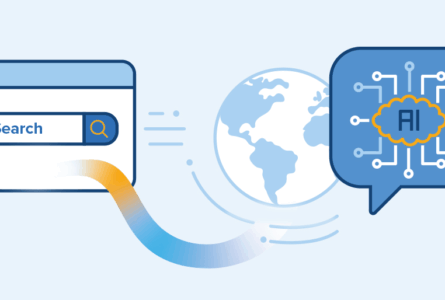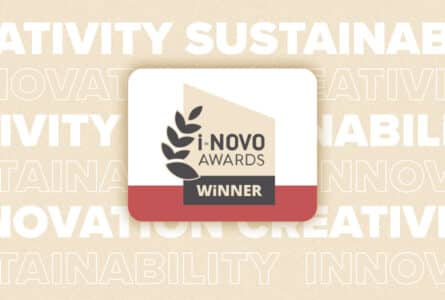To coincide with VirtualExpo’s transformation into a marketplace, we are reorganizing some of the key performance indicators on your results page to make them easier to analyze and exploit.
1. EASIER TO ANALYZE YOUR RESULTS
To facilitate the analysis of your results, we have reorganized your “Sales Opportunities” into non-exploitable and exploitable indicators:
- Sourcing and Web Traffic are two non-exploitable indicators: the volume of traffic searching for your products and the number of visits to your website.
- Sales contacts consist of exploitable indicators. These range from prospects who visited your stand or consulted detailed information to potential buyers who sent you a request.

2. EASIER TO EXPLOIT YOUR RESULTS
We have made it easier to exploit your sales contacts by separating them into three indicators by order of priority:
- LOW: “Stand Prospects” who merely consulted your products. These can be used for lead nurturing only.
- MEDIUM: “Where to buy” prospects who consulted your sales network. They can be used for medium-term sales prospecting.
- HIGH: Requests from potential buyers. These require immediate handling by your sales network.

3. HOW TO EXPLOIT YOUR SALES CONTACTS
To enable suppliers to exploit their sales contacts according to buyer need, we have provided this simple schema. It is also accessible on your results page via the link “How can I exploit my sales contacts?”. We encourage you to share it with your sales network.

ACCESS YOUR SALES CONTACTS HERE:
AeroExpo – AgriExpo – ArchiExpo – DirectIndustry – MedicalExpo – NauticExpo
4. CONFORMITY WITH THE GENERAL DATA PROTECTION REGULATION (GDPR)
The GDPR recognizes that responsible use of personal data and genuinely effective sales prospecting go hand in hand. It is based on a simple principle: at all times, buyers should be able to give their consent for the use of their data, and withdraw their consent, easily.
To reflect this simple principle, all the forms on VirtualExpo’s marketplaces, whether they are used to send requests or simply to access information, contain the same legal disclaimer:

“The VirtualExpo Group protects your privacy: when you request a quote, documentation or price options, or when you consult a Seller’s price options, sales network or contact details, your personal data will be transferred to the Seller or, if applicable, to one of their area managers or distributors who will be able to respond to you directly. See our Privacy Policy for details on the method used to process your data, the purpose and your rights concerning this data. By continuing to use our website you agree to our General Terms of Use.”
Exploiting “See Price Options Prospects”
Thanks to the above disclaimer, buyers who click on “See price options” agree to the supplier contacting them even though they did not actually send the supplier a request. As a result, suppliers can email these prospects concerning their research, without asking for their consent beforehand. This should be done 2-3 weeks later and not immediately.
Exploiting “Stand Prospects”
Stand Prospects are buyers that simply visited a supplier’s product pages without sending a request or consulting price options. As a result, they are not covered by the legal disclaimer. Suppliers can however obtain their consent to send future communication by sending them a special email. This email should contain the following three elements:
- An explanation of the source of their contact details (our marketplace)
- An explanation of the subject matter that any future communications will cover
- A button, link or replyto address to easily refuse
If the buyer does not refuse, future communications from the supplier should be limited to messages that are broadly related to the buyer’s initial research.
Exploiting Requests
Because buyers volunteer their contact information when they send a request, suppliers are naturally compliant with the GDPR when they respond to them. Notwithstanding, every request represents a definite potential sales opportunity and should therefore be handled effectively. The following is a short guide to help you.
=> Reply quickly
Ideally buyers can see the supplier’s display price and price options before sending a request. As a result, the buyer will already have validated the budget feasibility of the product before contacting the supplier. It is essential to contact these buyers as quickly as possible since many will have a deadline and have sent similar requests to other suppliers at the same time.
A recent quantitative study of web-generated B2B leads showed that suppliers who replied within 60 minutes were 7 times more likely to enter into quality conversations with the buyer than suppliers who replied after 1 hour, and 60 times more likely than suppliers who replied after 24 hours.
=> Call first if possible
About 80% of buyers provide their telephone number when making a request. To ensure quality replies, suppliers should when possible call the buyer first. Starting with a conversation will enable the supplier to validate the buyer’s needs and establish trust far more effectively than by email. As a result, the supplier will be able to send a perfectly personalized quotation with the probability that the buyer will respond. The supplier is more productive and the buyer is more satisfied.
=> Decline the request
Bear in mind that each buyer who sends a request will have the possibility to rate their experience with the supplier that handled the request. If for some reason a supplier cannot handle a particular request, the supplier should decline it immediately using the button provided in the request. This will automatically preserve their seller rating.
We hope you have found this guide useful and that it clearly explained the improvements to your results page. We wish you every success exploiting your sales contacts efficiently, effectively, and appropriately!











